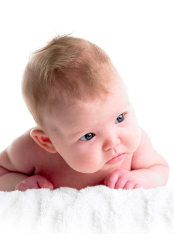

The pregnancy has come to an end and the long-awaited baby is born. And after a while, many parents who are not yet sufficiently experienced have a lot of worries and questions: is their baby developing normally, is he able to do everything for his age. In this article, we will consider how the physical and mental development of a child up to a year takes place by months.
In the first year of life, the baby learns everything - follow, smile, grab, sit, crawl, stand, walk. Each new success undoubtedly pleases all parents. There is a calendar, thanks to which you can monitor the skills of the crumbs. However, it is important to consider that the development of a child up to a year occurs individually, because all children are different. For example, if a baby does not do something at five months, then he will definitely do it at six. Plus/minus a month is the norm.
Consider what changes occur in the development of children from birth to one year of age.
Child development by months
2nd month

Every baby learns a lot in the first year of life. Don't worry if he doesn't know how to do something. After all, each child is individual, something is not yet possible to master, but something is better. In no case should a baby be compared with other babies or with the developmental standards described above. You can only compare him with himself, what he was a month ago, and what he has become now.
Views: 154969 .The development of the baby is under the vigilant control of physicians, especially the first year after birth. Mom should visit the local pediatrician every month in order to check height, weight, circumference chest and baby's head. All these activities are carried out in order to timely identify possible deviations in its development.
Doctors in pediatric practice are guided by a table of child development up to 1 year by month. The neurologist has his own, which allows you to monitor the mental development of the baby. Of course, we all understand that there can be no clear age norms - all children grow according to an individual schedule, but it’s still worth listening to the average indicators of a table of child development parameters up to a year old.
Some babies are born real heroes - more than 4 kg and with a large height of 58 cm, while others have a slender build, and therefore may not gain the prescribed kilograms and centimeters.
All these parameters in the table vary from minimum to maximum, but deviations from the norm are already causing some concern for physicians. In the first months of life, children gain up to one kilogram, but subsequently lower this bar and no longer grow so intensively, adding only about 300-600 grams per month.
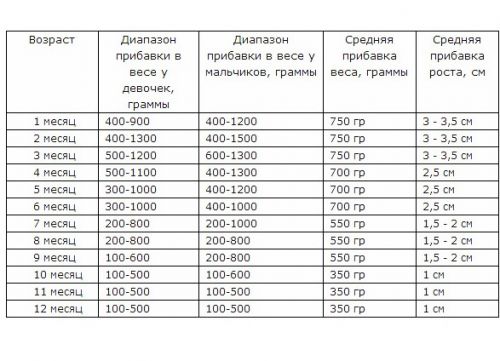
Pediatricians pay less attention to growth, since it does not reflect whether the baby is eating properly, but only indicates its genetic component. But height, together with weight, is used in the formula for calculating the minimum and maximum body mass index, which means that it must still be measured. The parameter is calculated using the following formula:
BMI = weight / height of the child squared.

The same information content as weight with height, have indicators of the volume of the chest and head. Too actively growing head may indicate hydrocephalus or rickets. The table of physical development of children up to a year can be found directly at the pediatrician's appointment.
At one month, at three, at six months and at one year old, the pediatrician sends the baby to an appointment with a pediatric neurologist. The doctor must make sure that the psychomotor development of the baby corresponds to the norm, which is indicated in a specially designed table. At a certain time, the child should begin to react to others, walk, roll over from his back to his stomach and back, crawl, sit, walk.
Every newborn baby is unique in its own way. At the same time, there are general norms for the development of babies by age, starting from the first month of life and up to a year. Back in 2006, the World Health Organization was engaged in the creation of tables of growth and weight norms for children up to a year. Assessment of the physical development of the baby is the main parameter used by doctors at the time of the patronage examination.
In order to accurately assess the condition of the crumbs during the neonatal period, indicators such as weight, height, motor abilities and teething.
Age and weight tables for children under one year old are an aid used by Russian pediatricians to examine a baby after birth.
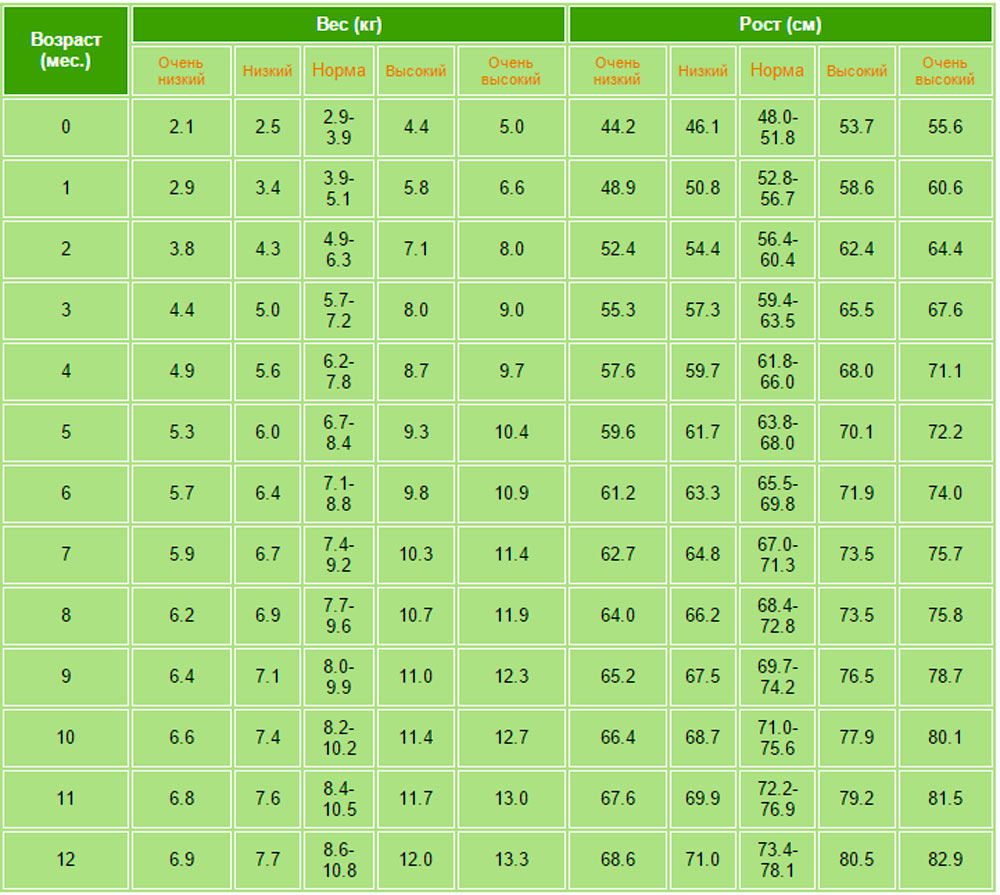
Even an insignificant deviation from one or another indicator, which you will see in the table, will alarm in any case. We remind you that the baby will not necessarily have full matches that can be checked against the table, and inappropriate values \u200b\u200bmay be due to some reasons.
Children say: The five-year-old daughter of a friend proudly announces:
- I really like apples. When I was in my mother's tummy, my mother ate apples, and I saw how they swim around me.

Important! At the first sign of a deviation in the physical development of a newborn from the norm, consult a doctor.
For clarity, analyze the data in the table.
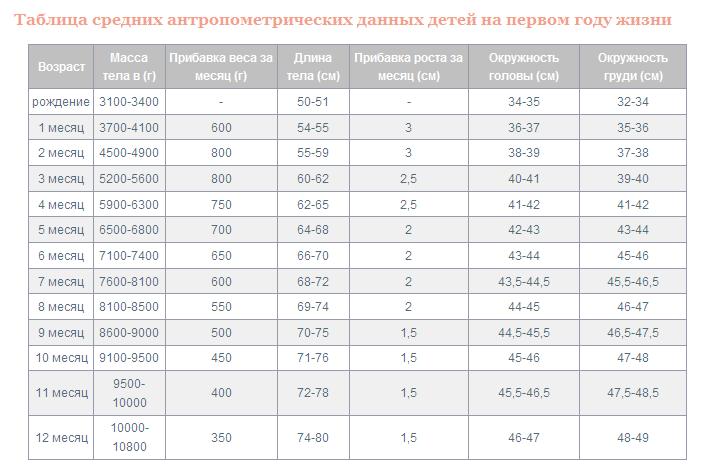
Lullaby for newborns:Already like a dream walked around the bench
Sandman wandered on the floor
Sandman wandered on the floor
Wandered to our Masha
I wandered into her bed,
She lay down on the pillow.
Lie down on the pillow
She hugged Masha.
In fact, solid reasons for concern appear only with a complete diagnosis of the state of development of the baby and with the detection of dystrophy in him. In other cases, tabular data can only roughly guide you. It's not scary if the baby is underweight by 500-800 g, as indicated in the table of norms for a certain month. Most likely, he will catch up in the next period.
Evgeny Komarovsky answers this question in our video.
Have you ever thought, perhaps the baby is malnourished or your baby is not enough for him? breast milk? This, of course, is another indicator of underweight. Try to increase the caloric intake of lactation, eat foods containing the necessary nutrients. If the baby is more than six months old, introduce additional complementary foods. 
Note! Do not give to a newborn without consulting a pediatrician. They can negatively affect the development of the baby.
You probably have too nutritious milk or the baby eats too often. In such situations, if there is no diagnosis of obesity, doctors recommend that mothers go on a low-fat diet and feed the baby according to the regimen. In case of diagnosis of diseases of dystrophy or obesity, appropriate treatment is prescribed. Sometimes complications during labor, signs of progressive rickets, asphyxia, malnutrition and fetus are considered a negative consequence of deviations.
During the first 12 months, the child develops especially actively. And although all babies go through different stages of development on their individual schedule, there are some common signs that most children of the same age have. To determine whether the baby is developing normally and whether it is necessary to inform the pediatrician about any problems, parents should know how the baby grows and what skills the baby acquires in the first year of life.
 Parents need to know if the child is developing according to age in order to contact a specialist in time in case of deviations.
Parents need to know if the child is developing according to age in order to contact a specialist in time in case of deviations.
First of all, the physical development of the baby is evaluated, the indicators of which are:
The emotional and mental development of the crumbs is evaluated according to the following indicators:
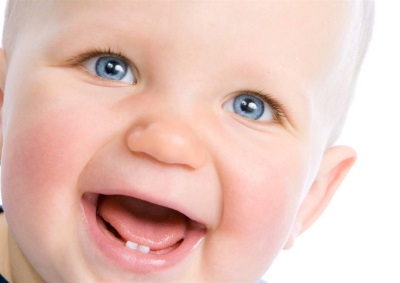 The emotional and mental development of the crumbs is no less important than the physical
The emotional and mental development of the crumbs is no less important than the physical
Every month, the baby not only gains weight and body length, but also pleases parents with new skills. Traditionally, the development of a child of the first year is noted by months. We have collected the main features of the development of the child in the following table:
|
Age and physical indicators |
Skills |
|
At the time of birth Height (length) - 49-50 cm Weight - 3200-3300 g Head circumference - 34-34.5 cm Chest circumference - 32-34 cm |
Moves legs and arms while awake. Starts and starts to blink at sharp sounds. Responds to stimulus by crying. |
|
1 month Height (length) - 54-55 cm Weight - 4200-4500 g Head circumference - 36.5-37 cm Chest circumference - 36-36.5 cm |
He tries to raise his head in a position on his stomach and hold it for up to 5 seconds. Follows moving bright objects and the face of an adult. Responds to harsh sounds. Replies with a smile. Starts to roam. |
|
2 months Height (length) - 57-58 cm Weight - 5100-5600 g Head circumference - 38-39 cm Chest circumference - 38-39 cm |
Holds head for a long time. Turns to the sound of an adult speaking. Grabs objects reflexively. Actively interested in the outside world. |
|
3 months Height (length) - 60-61.5 cm Weight - 5800-6400 g Head circumference - 39.5-40.5 cm Chest circumference - 40-42 cm |
Holds head well in upright position. Looks at things for a long time. Makes different sounds. With support under the armpits, it rests on the legs. In the position on the stomach, it rises on the forearms. Turns sideways from the back. Emotionally responds to the conversation, shows dissatisfaction with loud crying. Sucks fingers or fist. |
|
4 months Height (length) - 62-64 cm Weight - 6400-7000 g Head circumference - 40.5-41.5 cm Chest circumference - 41.5-42 cm |
Confidently raises his head, lying on his tummy. Holds mother's breast or bottle with handles during feeding. Laughs and smiles while playing. Long buzz. Grabs hanging objects. Rolls over from back to stomach. In the position on the stomach, it rises with support on the palm of your hand. Lying on the back, raises the head and shoulders. |
|
5 months Height (length) - 64-66 cm Weight - 6900-7500 g Head circumference - 41.5-42.5 cm Chest circumference - 43-44 cm |
He recognizes his mother and other close people. Consciously follows the object with his eyes. Rolls from tummy to supine position. Grabs and holds objects with both hands. Takes an object from the hands of an adult. Sits with support. Long singsong hums. Responds to heard nursery rhymes and songs. Looking at pictures. |
|
6 months Height (length) - 66-67.5 cm Weight - 7300-7900 g Head circumference - 42-43 cm Chest circumference - 44-45.5 cm |
Sits without support. Stretches hands to the subject that interested. He picks up a toy that has fallen out of his hands. Tries objects "on the tooth." Starts to crawl. Learn to eat from a spoon. Begins to pronounce syllables. Tries to stand on his feet, holding on to a support. Responds to a name. Listen carefully to an adult. Looks for an object that an adult is talking about. |
|
7 months Height (length) - 67-69 cm Weight - 7600-8300 g Head circumference - 43-44 cm Chest circumference - 45-46.5 cm |
Crawls and sits well. Stands with support for both hands. Holds an irregularly shaped object in his hand. He plays with toys for a long time, studying their properties. Drinks from a mug with the help of an adult. Tries to sit up. Shows body parts. |
|
8 months Height (length) - 69-70.5 cm Weight - 7900-8600 g Head circumference - 43.5-44.5 cm Chest circumference - 46-47 cm |
Looking for a toy that has fallen. Transfers an item from one pen to another. Stands up holding on to a support. Creeps fast. Sits down, lies down, steps over objects. Babbles with intonation. Happy with other children. Shows familiar objects, answering the question "where?". Independently holds solid food (rusk, biscuits). Afraid to leave my mother. |
|
9 months Height (length) - 70-72 cm Weight - 8200-8900 g Head circumference - 44-45 cm |
Tries to stand and take the first steps. Imitates other children. Reaches for an object of interest and tries to get it. Consciously manipulates toys. Shows human body parts and toys. Tears and crushes sheets of paper. Holding onto a support, dancing to the music. |
|
10 months Height (length) - 71.5-73 cm Weight - 8500-9200 g Head circumference - 44-45.5 cm Chest circumference - 47-48 cm |
Begins to pick up small objects with fingers. Puts fingers in holes, opens drawers. Plays hide and seek. Walks with the support of two hands of an adult. Can go up and down stairs (3-4 steps). Understands the requests of an adult. Repeats gestures and sounds after an adult. Waving his hand at parting and meeting. He tries to eat on his own with a spoon. |
|
11 months Height (length) - 73-74.5 cm Weight - 8700-9400 g Head circumference - 44.5-46 cm |
Worth it on its own. Walks with support by one hand. Lifts objects without crouching (bending down). Able to sit down without support. Assemble the pyramid. Stacks cubes. Begins to pronounce "lightweight" words. Plays patty. He reacts brightly to a stranger or new toys, as well as to praise. Interested in books and musical toys. |
|
12 months Height (length) - 74-76 cm Weight - 8900-9600 g Head circumference - 45-46 cm Chest circumference - 48-49 cm |
Tries to walk on his own. Gets up from a squatting position. He drinks from a cup on his own. Can refuse unloved food. Bites off biscuits and other hard foods. Understands the words "can't" and "may". Recognizes animals and shows them in the picture and on the street. Knows how to use some items. Pronounces 10-15 words. |
See what the famous pediatrician E. Komarovsky thinks about the early development of the child in the next video.
Immediately after birth, the baby begins to adapt to new living conditions, and his parents to their new responsibilities. The main need of the crumbs during this period is bodily contact with the mother.
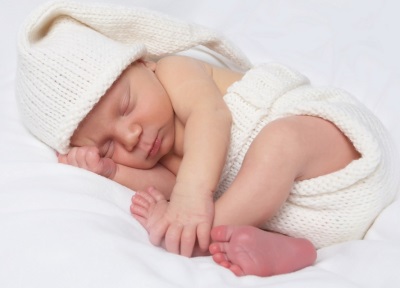 The first reflexes must be checked by a pediatrician
The first reflexes must be checked by a pediatrician
Watch the following video, which talks about what happens to a baby in the first month after birth.
During the first month, the child grows by an average of 3 cm and adds about 600 g of weight.
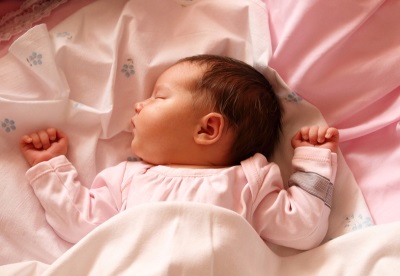 Already in a month, the baby begins to react more clearly to sounds and emotions.
Already in a month, the baby begins to react more clearly to sounds and emotions.
Compared with the weight and height of 1 month, the little one becomes 700-1000 g (average 800 g) and 3 cm larger.
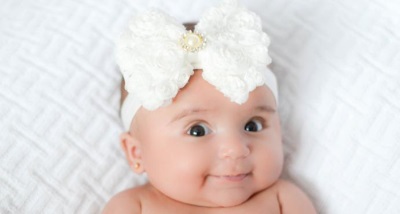 At three months, the child becomes, as a rule, calmer.
At three months, the child becomes, as a rule, calmer.
During the third month of life, the baby, on average, adds 750 g and grows in length by 3 cm. The baby has been awake for longer - about 1-1.5 hours. At this time, you need to talk with the baby, hug him, show everything around.
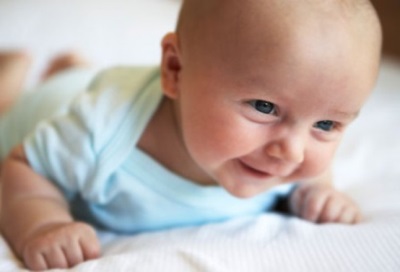 It is more interesting to communicate with the baby
It is more interesting to communicate with the baby
By the age of four months, compared with the previous month, the child gains an average of 700-800 g of weight and grows in length by 2.5 cm. The baby has already developed a certain daily routine, and sleep at night is longer.
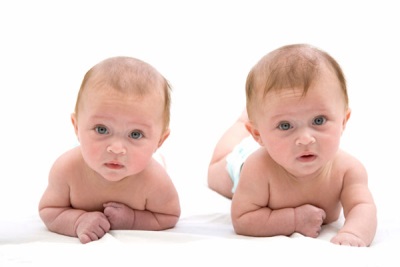 At 4 months, the child can rise a little to look at the desired object.
At 4 months, the child can rise a little to look at the desired object.
For the fifth month, the growth of the baby increases by 2-2.5 cm, and the weight - by about 600-700 grams.
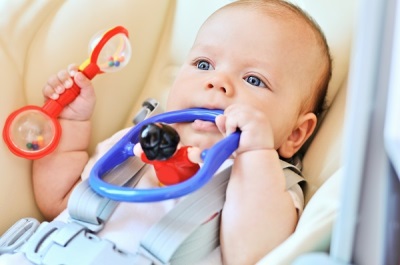 Stimulate the development of the child, but do not force him
Stimulate the development of the child, but do not force him
For the sixth month, the baby adds about 600 grams of weight and about 2 cm of height.
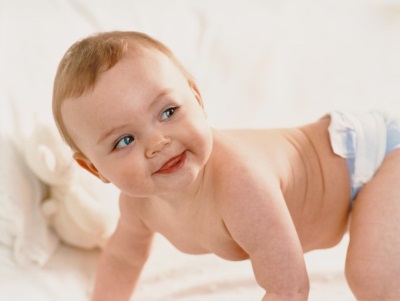 At 6 months, the fun begins: the child learns to crawl and receives the first complementary foods
At 6 months, the fun begins: the child learns to crawl and receives the first complementary foods
During the seventh month of life, the child gains from 400 to 600 g, and his height increases by 2 centimeters.
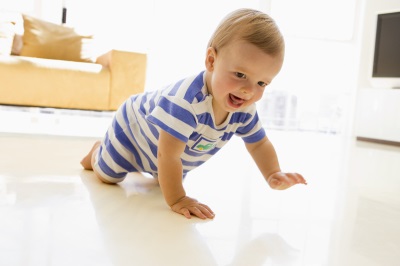 At 7 months, the baby crawls quickly, mastering almost the entire room
At 7 months, the baby crawls quickly, mastering almost the entire room
Compared to the indicators of 7 months, the child becomes 1.5 centimeters taller and gains weight by about 400-500 grams.
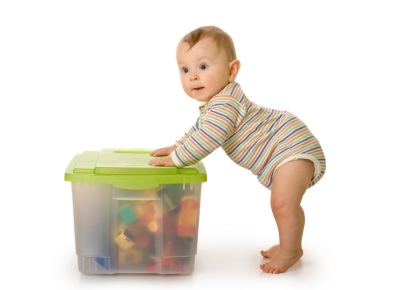 The child can stand up by holding on to a support
The child can stand up by holding on to a support
During the ninth month of life, the baby adds about 400-500 grams and becomes 1.5 cm taller.
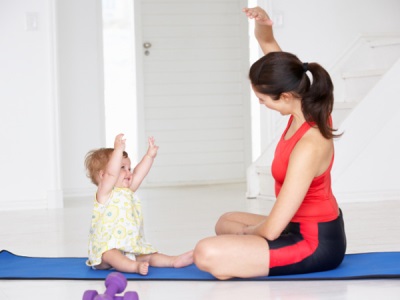 Daily gymnastics with your child will be a great solution
Daily gymnastics with your child will be a great solution
In growth for the tenth month, the baby adds from 1 to 1.5 cm, and in weight - about 400 grams.
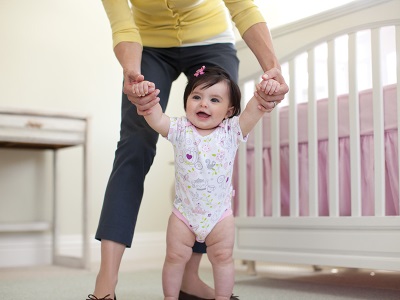 Many children at this age learn to walk diligently, and some already walk on their own.
Many children at this age learn to walk diligently, and some already walk on their own.
For the eleventh month, the child gains approximately 350-400g, and his height becomes 1-1.5 cm longer.
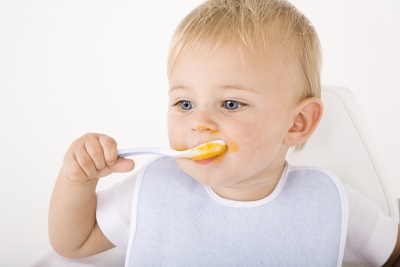 WITH early age teach your child to eat with a spoon
WITH early age teach your child to eat with a spoon
Compared to the previous month, the child has added about 1 cm of height and approximately 350-400 g of weight. By the age of one, babies usually triple their birth weight and weigh an average of 9-10 kg. Average height one year old baby is 74-80 cm.
In a year, babies become practically independent in movement and have well-defined preferences.
So the long-awaited holiday has come in your family. You can be congratulated on the addition to the family. You must understand that a very important period has come in the life of the family. Now every day will bring joy and unexpected discoveries.
If we talk about how rapidly and entertainingly the child develops by months, then the first year can be called the brightest. The kid every day learns the world, carefully observes those around him. He learns to smile, sit, crawl, walk. Each baby develops individually, but there are many general criteria that apply to all children. Today our topic is "Child development by months to a year."
This period can be considered adaptive in the life of the child. Seventy percent of the time he sleeps. Sleep is very important for a newborn. The physical is especially noticeable. It grows by an average of 3 centimeters. His body gets used to a new, unfamiliar environment. During wakefulness, the baby randomly waves his arms clenched into fists and legs bent at the knees. By the end of the 1st month, he can already briefly hold his head, fix his eyes on bright toys, the faces of his parents, and clearly make vowel sounds. Specialists in pediatrics are sure that it is very important to attach the baby to the mother's breast in the first two hours after birth. At this time, an invisible contact appears between the mother and her offspring. A woman begins to feel the emotions and needs of her baby at a distance.
No less important is nutrition during this period. In the presence of mother's milk and its good quality, the child gains approximately 600 grams per month. There is no need to rush while breastfeeding. For him, this is not just a process of eating - he enjoys the warmth and communication with his mother.
At birth, a child has some natural reflexes that help him adapt to a new environment. Some of them are lost in the first months of life. These reflexes are:
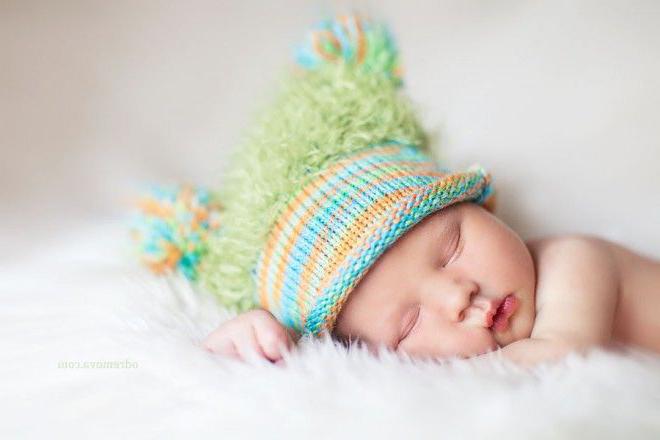
Other reflexes remain with the little man for life:
By the presence of reflexes in the baby, pediatricians determine the mental development of the child. By the end of the 1st month of a baby’s life, young mothers need not only to surround the child with warmth and care, but also to accustom him to a clear day-night regimen.
This period of life is sometimes called the time of "revival". The baby can already not only look at your face, but he can also feel your emotional state. When the mother approaches the crib, the child begins to randomly wave his legs and arms. At 2 months, the little man holds his head more confidently. His height increases by about three centimeters, and the weight gain should be about 800 grams.

The development of a child from month to year is very interesting to observe. Your baby, if you put him on his tummy, can already lean on his forearms, hold his head for a longer time.
During this period, it is important to often turn it on the tummy. This will help digestion, get rid of gases, strengthen the muscles of the neck and back. Make sure that the baby does not lie on its side for a long time - this can provoke a curvature of the spine. life is characterized by the fact that the baby is already more focused on bright toys. He "talks" to himself, can pronounce not only vowels, but also some consonant sounds. He is more interested in the surrounding things and events. He is already becoming a completely independent person - he pulls the nipple out of his mouth, and then tries to put it back on his own. During this month, the child "gets heavier" by another 800 grams and grows by 3 centimeters (average figures).

The period of wakefulness increases to one and a half hours. At this time, take the baby in your arms, talk to him, walk around the room, kiss him, hug him. The correct development of the child from month to year is very important for his further physical and mental health, so you must monitor him very carefully.
During this period, the baby already reacts to the sound, holds his head well. When he lies on his tummy, he leans on his arms and knows how to straighten them. He reaches for toys and can grab them, look at them up close and taste them. And most importantly - the baby is already able to distinguish his mother from other adults. For the fourth month, it increases by about 750 grams, and growth - by 3 centimeters.
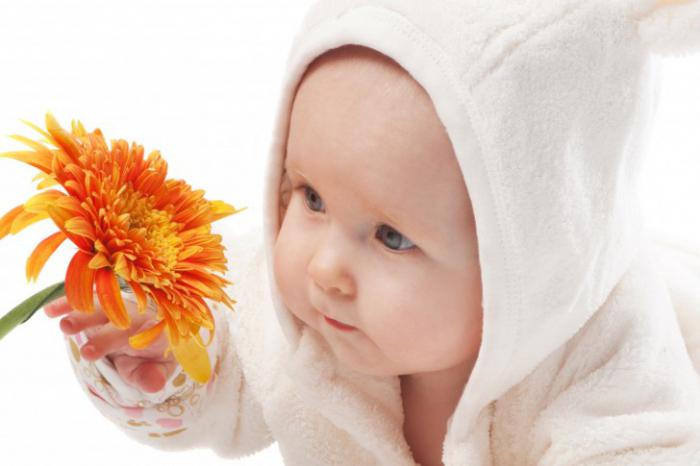
The child by months becomes more intense during this period. This is a kind of new stage in its development. He already knows how to roll over. Some especially active babies try to sit, crawl, stand on their feet. At this time, it is important to hold the baby, learn to walk.
The child already easily distinguishes native people from strangers. He "talks" more confidently, though not yet consciously. In the fifth month, the child will gain about 700 grams in weight, and will grow by about 2 centimeters.
During this period, the baby already knows his name. What changes when Development is fulfilled, the daily regimen moves to a new level. The baby is already much more awake, knows the time of feeding and sleeping well.
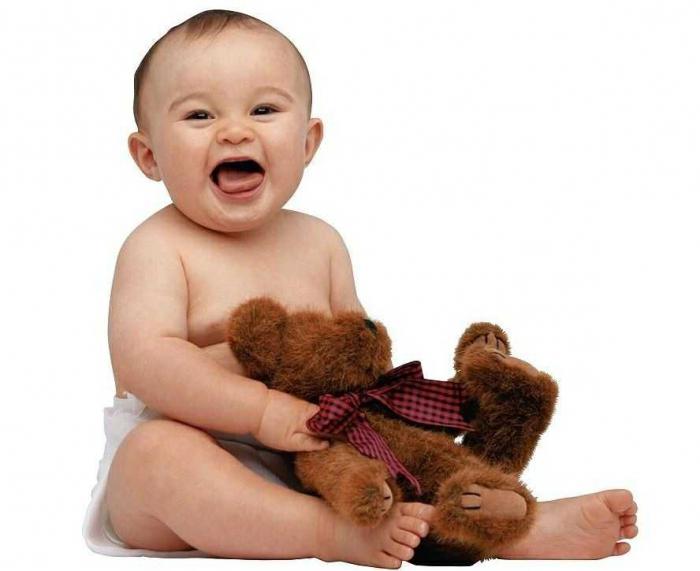
Without assistance, the child is able to sit. He holds his toys well, shifts them from pen to pen. Lying on his tummy, the baby pulls up his legs and tries to kneel. He learns to repeat individual syllables - "ba-ba", "ma-ma".
At this time, many mothers begin to actively feed the baby. However, try not to give him sweet and salty foods, because at six months the intestines and kidneys are not yet ready for such a load. The pediatrician will give you individual advice on complementary foods.
At this age, your beloved baby turns into a fidget. He easily rolls over from his back to his tummy or to his side, he knows how to distinguish between objects. If, for example, you ask him to show you a watch, then he, looking around, will definitely show you where they are.
With outside help, the baby can walk around the room, crawls on its own, but mostly backwards.
At this age, kids love to swim. This is due to the fact that they already sit quite confidently and can play with toys in the bath. While bathing, tell the baby what the parts of his body are called, pointing to them. This contributes to memorization, and soon the child will easily show where his leg is, where his finger is.
Changes are observed in the diet of the baby. At this age, cottage cheese and meat are useful for him, which replenish the supply of calcium in the body, which is necessary for the growth and formation of teeth, as well as potassium, which is important for the good functioning of the heart. In addition, the child needs protein for muscle growth. During the seventh month, the baby will gain about 700 grams in weight and 2 centimeters in height.
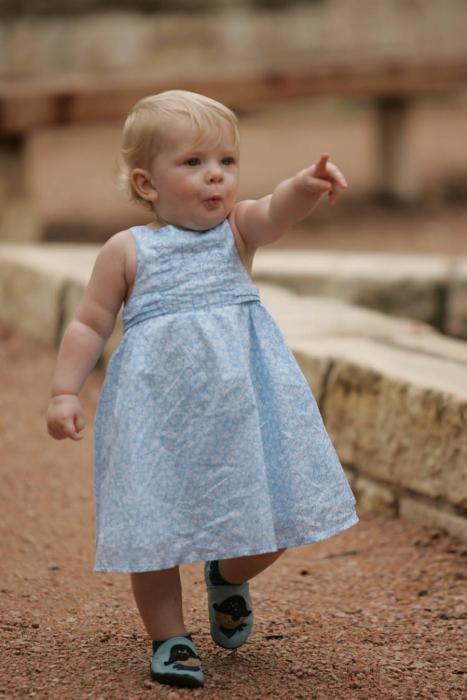
The most important thing at this time is not to leave the child unattended, because he already moves well on his own, sits down. The kid reacts briskly to new toys. He is already able to distinguish dad and mom from strangers in a photograph. Plays with interest in "patties". The baby knows that when saying goodbye to someone, you need to wave your hand, tries to eat on your own.
Using a chair, armchair or sofa, the child stands on his own legs and moves around. He often falls, cries, but gets up again. A baby at the age of nine months is happy to repeat words after adults, sometimes individual syllables. Already he can drink from a cup, of course, if an adult supports it from below.
So, almost an adult lives in your family - a child of 10 months. The development of the baby is so fast that you do not have time to enjoy his new achievements. Let's try to celebrate all his successes. During the tenth month, the baby grows by about 1.5 centimeters (since birth, he has grown by about 22 centimeters). During the same period, he will gain 450 grams in weight (the total increase will be about 6.5 kilograms). Naturally, these figures are indicative.
A 10-month-old child, whose development is becoming more and more rapid, sleeps most often 1 time during the day. The duration of the daytime rest is about 2-3 hours. Sometimes a child needs to sleep twice during the day, but one hour each. This mode is suitable for very active children. At night, the child should rest for at least 9-10 hours. Remember - if the baby does not get enough sleep, he will be capricious, refuse to play, eat poorly. The physical and psychological development of the baby is individual. However, if there is a pronounced deviation in the values \u200b\u200bof height or body weight in one direction or the other, it is necessary to consult a specialist to make sure that everything is in order with the health of the baby. Quite often, such violations are the first, and sometimes the only sign of an existing pathology.
At 10 months, the baby is very mobile. He no longer likes to be constantly in the arena, but more movements and a variety of impressions are needed. Most of his time he is in an upright position. The speech of the child also develops significantly. This is no longer a simple imitation of the speech of adults. He carefully pronounces the syllables "ma-ma", "ba-ba", and does it with different intonations.
![]()
The menu of a ten-month-old baby is already quite diverse. It includes milk porridge, vegetable puree, cottage cheese, meat, fish, fruits, vegetable puree and juices. Part of the food is of a solid consistency (this contributes to the development of the gastrointestinal tract, the formation of teeth). By the end of the tenth month, the baby should erupt four teeth. It's great if a mother can still breastfeed her baby at this age. This usually happens after a main meal or before bed. However, it happens that babies need such communication with their mother more often.
What achievements can a child of 11 months boast of? The development of the crumbs continues. The baby can now stand up and stand on his own. Quite confidently, he is able to pass with the help of a chair, holding on to it with one hand. A child at this age likes to imitate adults - opens and closes doors, takes a spoon in his handle and tries to eat on his own. With great pleasure, the baby throws toys on the floor. His fingers have already become very dexterous, and he can easily take the smallest objects.
An 11-month-old child, whose speech development also does not stand still, already quite intelligently pronounces simple words. He already understands a lot, becomes extremely observant and really wants to imitate adults, so during this period, parents need to be especially attentive to their speech, so as not to exclaim later: “Where did he get this?”
So you waited for the first birthday. Your baby is 1 year old! With what achievements did he approach his first significant date? To remember how this complex process took place, we advise parents to keep a calendar of child development by months.
Most children at 12 months already begin to walk, and the most active kids even run. At first, the baby holds on to the mother’s hand and carefully takes the first steps, and a little later the baby continues to walk on its own. In his eyes you will see fear and joy at the same time - because he so wants to be like you.
During the first attempts to learn to walk, there should be plenty of free space for the child. The baby should not get hurt and feel pain. This may delay his attempts to learn to walk for a long time.
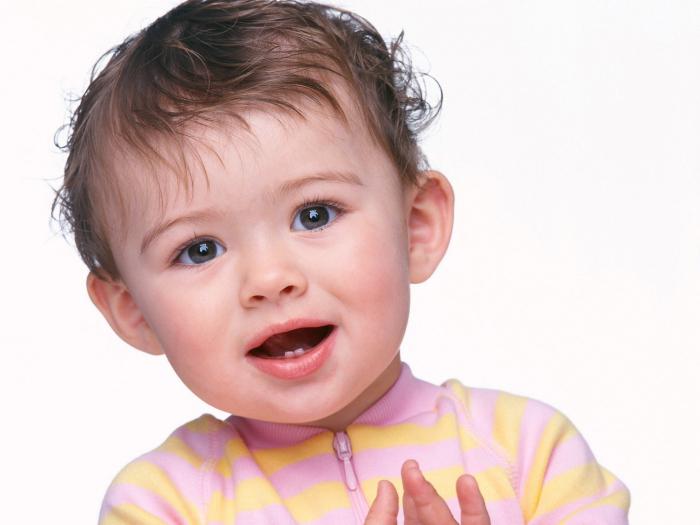
At the age of one, the child must confidently put the cubes one on top of the other, put rings on the rod. He quite distinctly pronounces 10-12 words. In addition, the baby babbles something in one language he understands. He knows well and gladly shows where his ears, eyes, pens, etc. are.
The kid shows where mom, brother or dad is. The child is already very mobile. This is cool. However, it is necessary to protect the child from injury as much as possible. Carefully inspect the apartment and try to close or soften the corners where the little man can get hurt. And most importantly - do not leave him unattended for a minute, especially if the child is very active.
Today we considered the topic "Child development by months to a year." We hope that our article will help you raise a healthy and strong baby. And one more piece of advice for new moms. If you have any questions regarding the physical or mental development of the baby, do not hesitate to ask your pediatrician once again. Remember that at this stage this is your faithful friend and adviser.